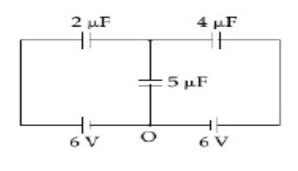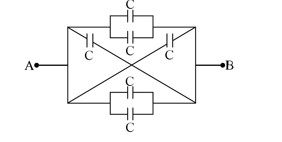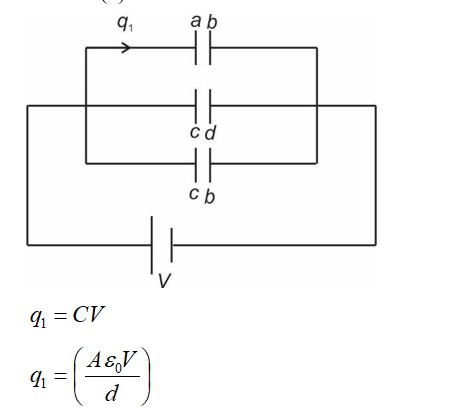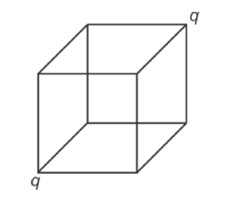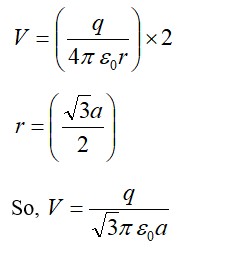In the circuit shown, charge on the
capacitor is:
In the circuit shown, charge on the capacitor is:
Option 1 -
Option 2 -
Option 3 -
Option 4 -
-
1 Answer
-
Correct Option - 1
Detailed Solution:Now, using junction analysis
We can say, q? + q? + q? = 0
2 (x - 6) + 4 (x - 6) + 5 (x) = 0
x = 36/11, q? = 36 (5)/11 = 180/11
q? = 16.36µC
Similar Questions for you
Please find the answer below
Capacitance of element
Capacitance of element,
Given:
dC? = (ε? + kx)A / dx [For 0 < x < d/2]
1/C? = ∫ dx / (ε? + kx)A) from 0 to d/2
= (1/Ak) [ln (ε? + kx)] from 0 to d/2
= (1/kA) ln (1 + kd/ (2ε? )
C? = kA / ln (1 + kd/ (2ε? )
Similarly dC? = (ε? + k (d-x)A / dx [For d/2 ≤ x ≤ d]
C? = kA / ln (1 + kd/ (2ε? )
Clearly, C? = C? = C
For series combination:
C_eq = C? / (C? + C? ) = C/2 = kA / (2ln (2ε? + kd)/2ε? )
Taking an Exam? Selecting a College?
Get authentic answers from experts, students and alumni that you won't find anywhere else
Sign Up on ShikshaOn Shiksha, get access to
- 65k Colleges
- 1.2k Exams
- 682k Reviews
- 1800k Answers
